Projects
The Winnecke Goldfield: Gold and Copper
AMI’s Exploration Licence EL27811 is about 65 km northeast of Alice Springs, extending about 60 km east-to-west. Its west end is only 35 km from the Stuart Highway and Adelaide - Alice Springs - Darwin railway.
● The area: 95 square km2.
● Main resources:gold, copper and other metals.
1. Geological Settings and Mineralization
Regional and local geological settings determine high levels of gold and copper mineralization in this tenement. It covers two famous goldfields: the Winnecke Goldfield and the Arltunga Goldfield.
Gold and Copper Mineralisation:
● Gold and copper mineralization is widespread in this area, mainly in a 16km long quartz vein along with big geological faults in the area.
● The gold-dominant mineralization is commonly associated with copper mineralization in the ESE-WNW Arltunga- Winnecke gold belt. The main gold-bearing areas are the Winnecke and Arltunga goldfields.
Gold Mineralizatio nand Deposits
● The main type of gold mineralization is quartz veins, containing auriferous pyrite and minor chalcopyrite; The second type is stratabound mineralization in altered quartz -muscovite-kaolinite schist, graphitic schist or sericitic schist. Both styles of mineralization are present in the Golden Goose workings.
● Delineated reserves:after several systematic exploration of Winnecke goldfield by authoritative institutions such as Hebei Bureau of Geology and Mineral Resources of China, the calculated gold reserves are: the gold reserves within 40m of underground shallow layer are 16.218t, and the average grade is 11.45g/t. Within 20m of the shallow layer, the amount of gold (Au) metal is 4.38t, the amount of ore is 403162.01t at the average grade of Au 0.86g/t. The amount of gold (Au) metalcalculated in the bottom layer of 20-40m is 11.84 tons, the amount of ore is 1013809.05 tons at the average grade of Au 11.68g /t.
● Prospective inferred reserves:Geologists infer that if the gold grade remains the same in depth of 40m to 240m, the prospective gold reserves may reach 64 tons.
● In the Winnecke gold mine area, some exploration and mining activities were carried out on the surficial ground for gold nuggets using simple tools in early 20 century. According to the available records, about 2000 kilograms gold had been mined in the shallow layer of this area.
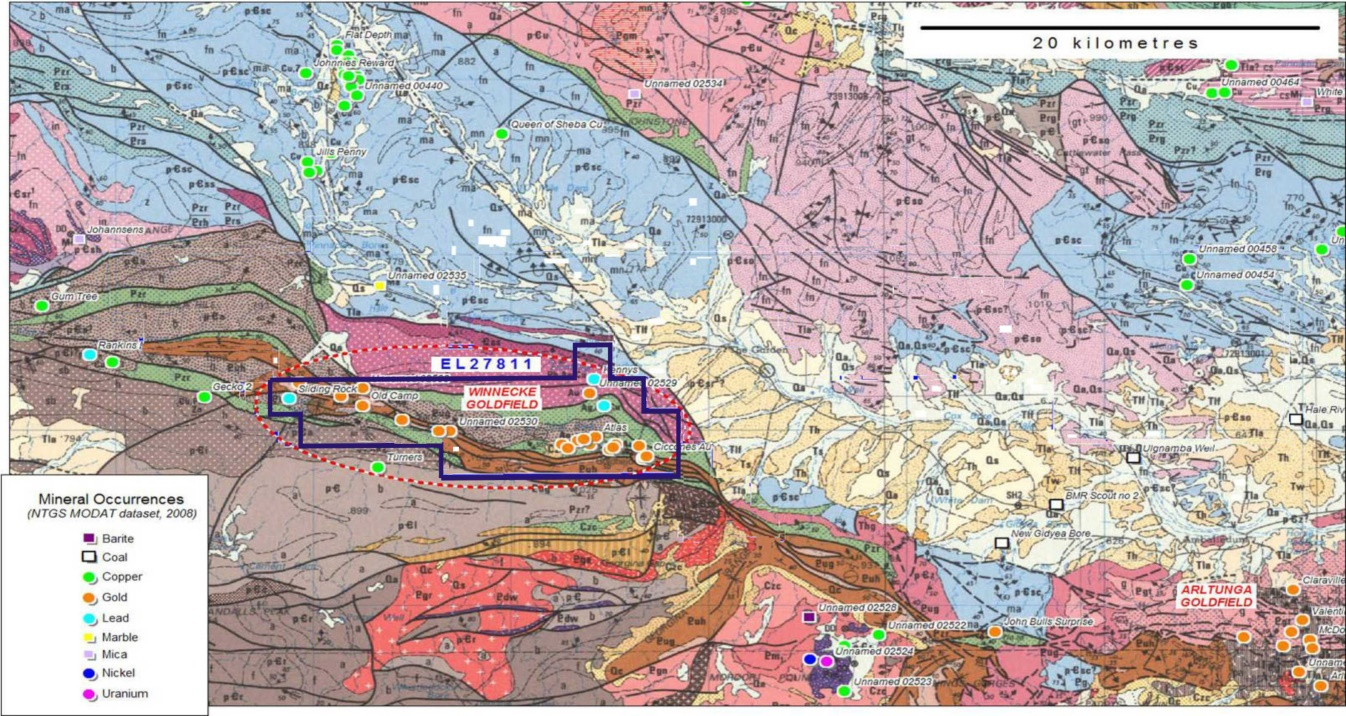
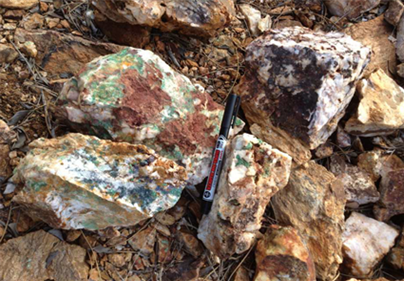
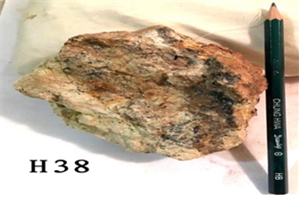
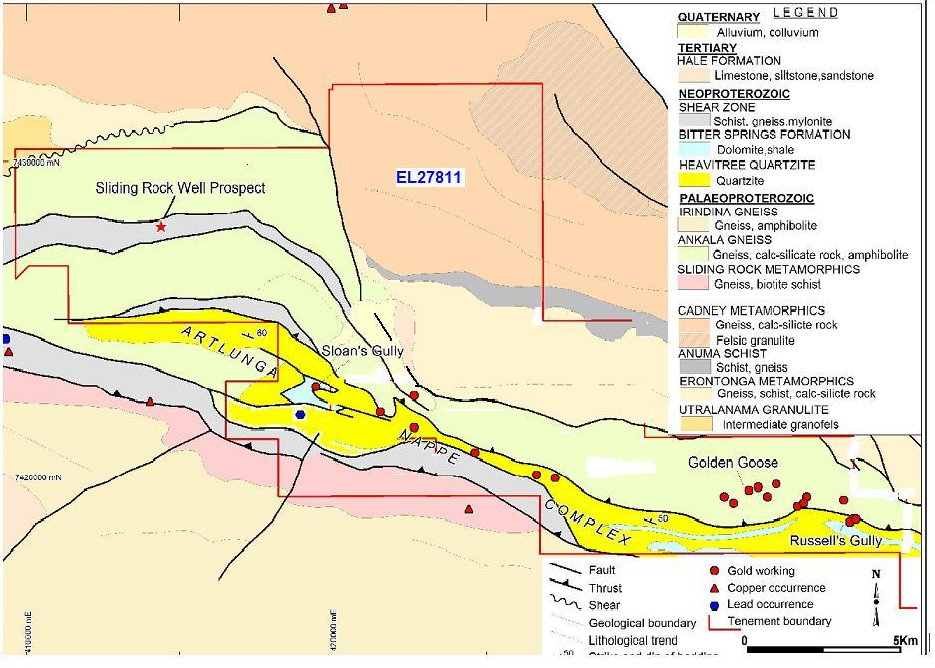
2. Characteristics and Grade of the Mineralized Ore bodies
• Using geological mapping and on-site trenching/pitting for vein exposure by our geologists in recent years, and also based on the previous geological work results, 40 gold mineralization alteration fracture zones and quartz veins have been found and confirmed in the Winnecke goldfield. The ore bearing horizon is mainly a set of low-grade to medium high-grade metamorphic rock series in Paleoproterozoic, and the lithology is carbosilicate, gneiss containing sillimanite and biotite, sericite schist, etc. Ore veins are mainly distributed in four gold-bearing mineralization belt areas: A, B, C and N.
3. Drilling Exploration and Ore Processing Plant Construction
⮚ Further drilling exploration: The geological survey of the Winnecke Goldfield has been completed, several ore belts have been drilled with limited depth, and high gold grade has been found. But previous drilling exploration were carried out in a relatively shallow earth layers (most of these drillings were less than 40 meters), further drilling exploration are required to further identify and measure the gold reserve in this mineral tenement. Our geologists have identified 32 gold-bearing quiz veins in Winnecke Goldfield and have prepared a drilling exploration plan. In the first stage, our drilling program will focus on the Golden Goose area, which is a primary target for high-grade gold. This area is about 2.5 square kilometres, including A1, A2 and A3 target zones. After these areas, other target areas are B, C, D, E and N.
⮚ Drilling work: It isplanned to drill 120 boreholes in the first stage to be completed in 2023-24. Then more drillings will be carried out in the following 12 months to confirm the proved reserves of gold deposits.
⮚ Mining feasibility study and ore processing plant scheme , and then obtain mining licenses.
Some Photos of Winnecke Goldfield:
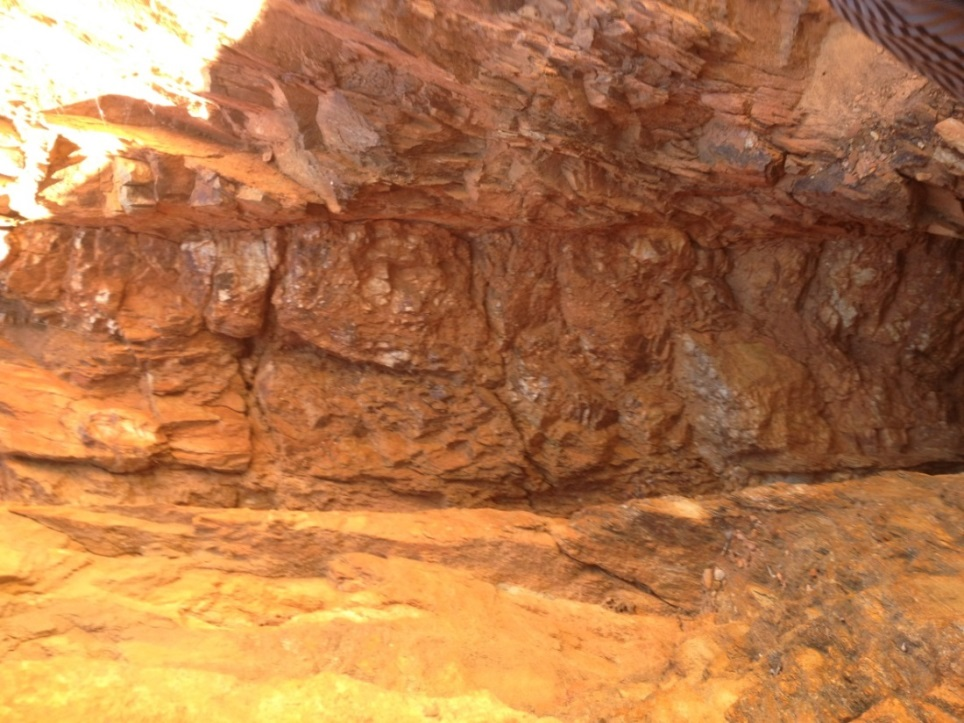
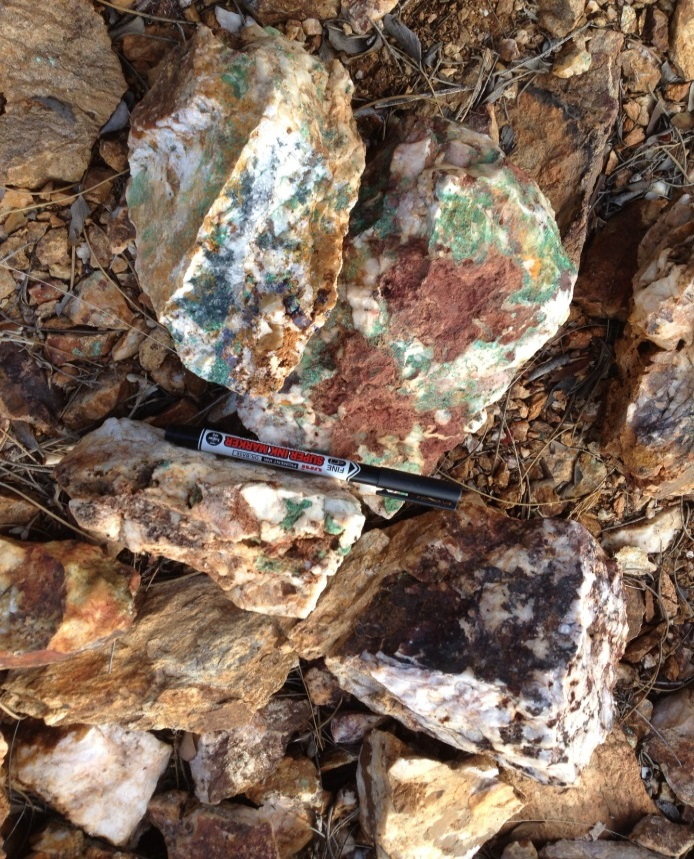

Jervois-Dulcie Copper Project: EL 27942
1. Geological settings and Copper Deposit
Location: This tenement is located approximately 250 km northeast of Alice Springs in the Northern Territory of Australia. It is within the greater Jervois Mineral Field.
Area: 52 km2. Main resources: copper and molybdenum.
The project lies within the emerging polymetallic province of the eastern Arunta Region where copper, gold, silver and base metals were discovered, which are geologically related to
· metamorphosed sediment and/or volcanic-hosted massive sulphide deposits, associated with bimodal magmatism at ca 1.8 Ga, such as Jervois copper discoveries and
· Mineral deposits related to mid-crustal felsic magmatism at ca 1.7 Ga such as Bonya Hills.
Mineralization: The copper mineralization at Dulcie-Jervois comprises broad zones of disseminated malachite internal to the Proterozoic Jinka Granite margins. The mineralization is interpreted to extend for several kilometers across the granite margin contact zone and into the surrounding sediments. Most known metalliferous deposits in the area are dominated by copper, molybdenum and tungsten.
Early estimates of copper deposits: The mineral occurrences are all part of the Jervois Mineral Field. The main fractured rock mass and faults which controls the copper mineralization lies in this tenement. Freeman (1986) quoted an inferred resource of 3.66 Mt @ 2.8% Cu, 0.9 Mt @ 9.0% Pb and 3.0% Zn for the central Jervois Cu-Pb-Zn-Ag deposits, Freeman’s updated estimates in the 1990s are 6.1 Mt @ 2.1% Cu.
The updated indicated and inferred copper deposit:the newly indicated and inferred copper reserve quoted by geologist teams from China is 672,700 tons of copper metal resources, which was based on systematic geochemical analysis in the field.The average grade of Cu is 1.86%, with the main vein extending for 11km in length, and 80 meters wide on average.
Copper market and price: The copper price in the world market is now entering into an uptrend for the next 5-10 years. Copper as an important metal will be in strong demand driven by Asian economic booming. In December 2022, Goldman Sachs upgraded its copper average price forecast for 2023 to be $US9750 per ton from $US8325 per ton previously, and now expects copper prices to average $US12,000 a ton in 2024.
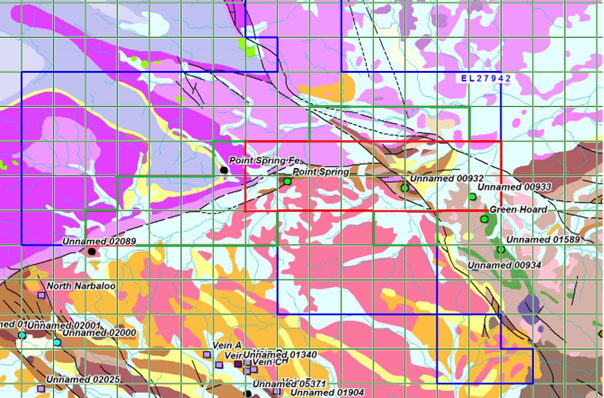
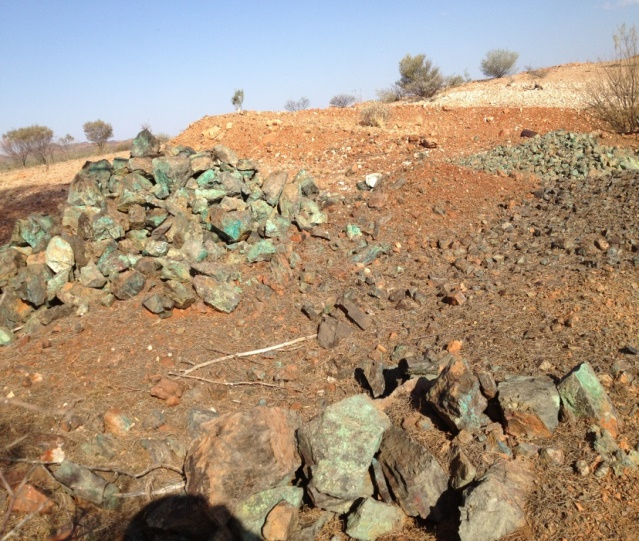
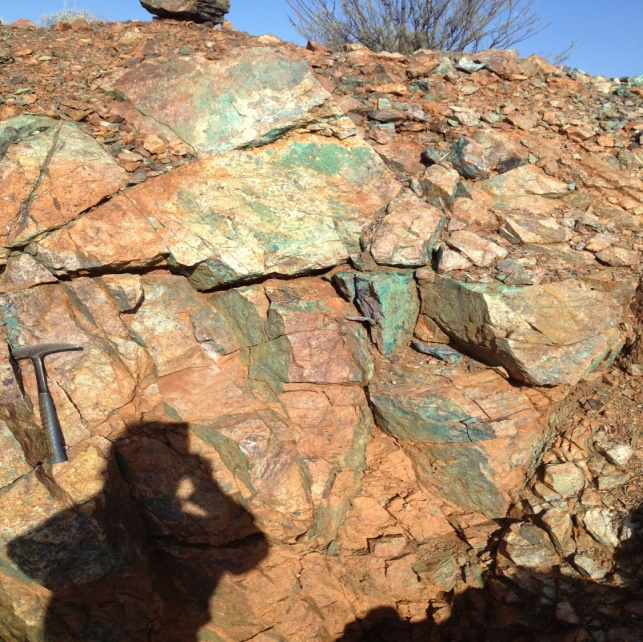
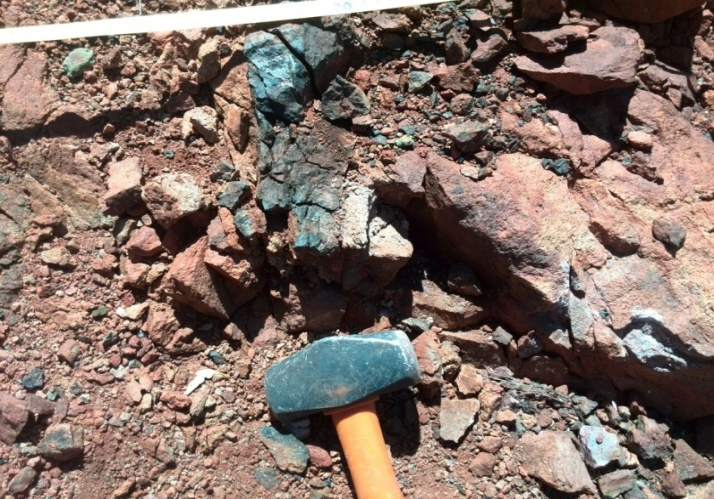
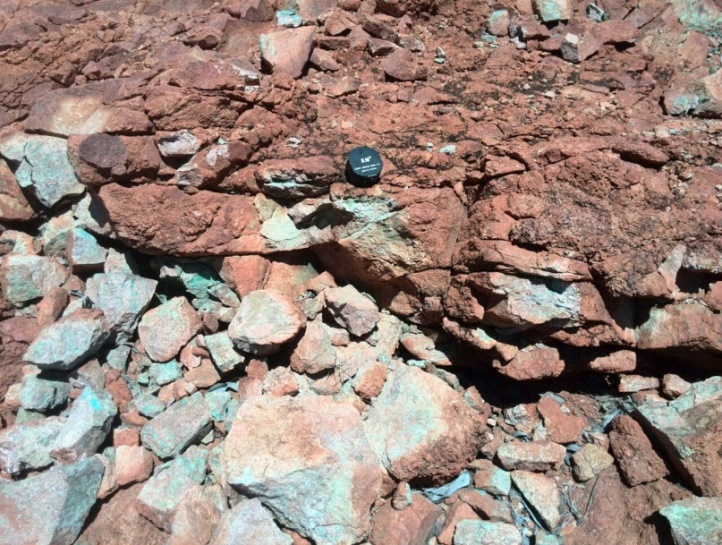
2. Analysis of Copper Ore-body
Characteristics of the Mineralized Body
Through a comprehensive geochemical survey, three ore bodies are delineated, which are exposed near the contact zone between rock mass and surrounding rock bodies. They are controlled by Northwest trended fault F1 and near east-west trended fault F2. The three mineralised vein belts stretching for 11km long, trending west-east. The intersection of the two fault structures and strong fracture zone are also the best part of the ore body. The three ore bodies are located along the geochemical anomaly and fault contact zone, covered by Quaternary weathered materials, mineral outcrops are clearly seen in the three ore bodies.
3. Inferred Reserves of Dulcie-Jervois Copper Project
· The three ore bodies are connected as a whole, with an east-west trending. The length of copper mineralized body is 11km, with an average width of 80m, and the average grade of Cu at 1.86%.
· The ore weight is 2.74g/cm3, the inclined depth is 50m, and the copper content in the ore body is calculated as 30%. It is preliminarily estimated that the prospective copper resources are 120.56 million tons, and the copper metal content is 672,700 tons.
- Jervois-Dulcie copper mine in this tenement is a large copper mine in terms of copper deposit scale. It is a key part of the famous Jervois copper-molybdenum ore belt in Australia, and it is the area where the copper-bearing rock mass is located.
- Copper deposit type: The primary copper deposit is a porphyry copper deposit. The geological engineering conditions, climate, terrain and ore body characteristics in this mining area are suitable for open-cut mining. The geological settings set great potentials for this mining area as a large copper deposit.
Table 1: Estimate of Prospective Copper Deposit inJervois-Dulcie copper belt
|
Average width (m) |
Length (m) |
Inclined depth (m) |
Unit volume weight (g/cm3) |
Average grade (%) |
Ore volume (1000 tons) |
Metal quantity (tons) |
Note |
|---|---|---|---|---|---|---|---|
|
80 |
11,000 |
50 |
2.74 |
1.86 |
120,560 |
672,700 |
The mineral content is calculated at 30% |
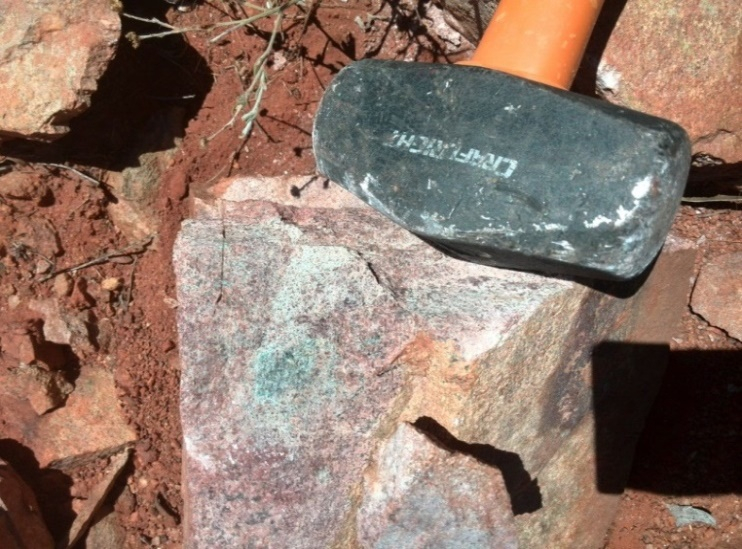
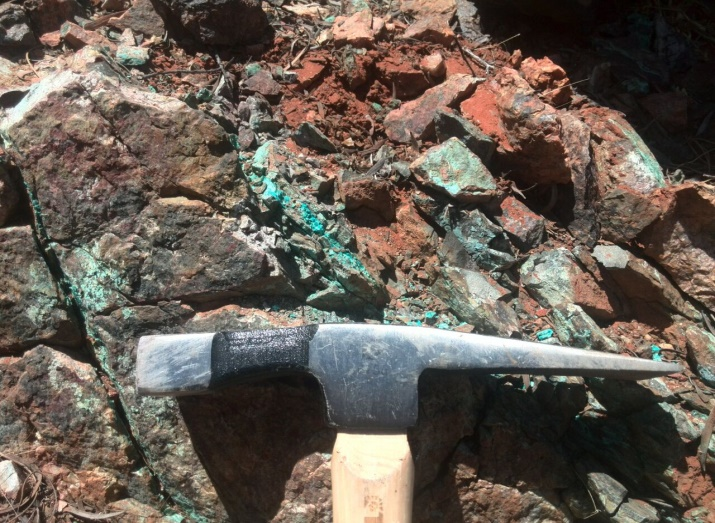
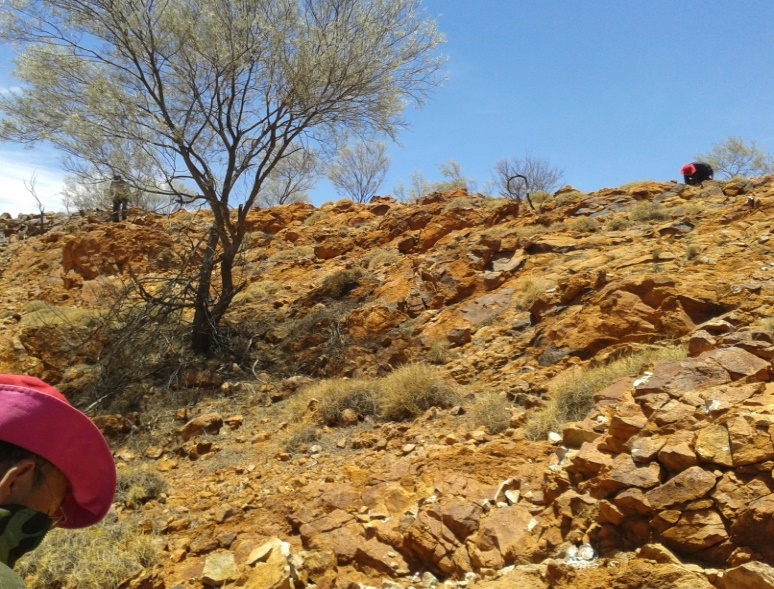

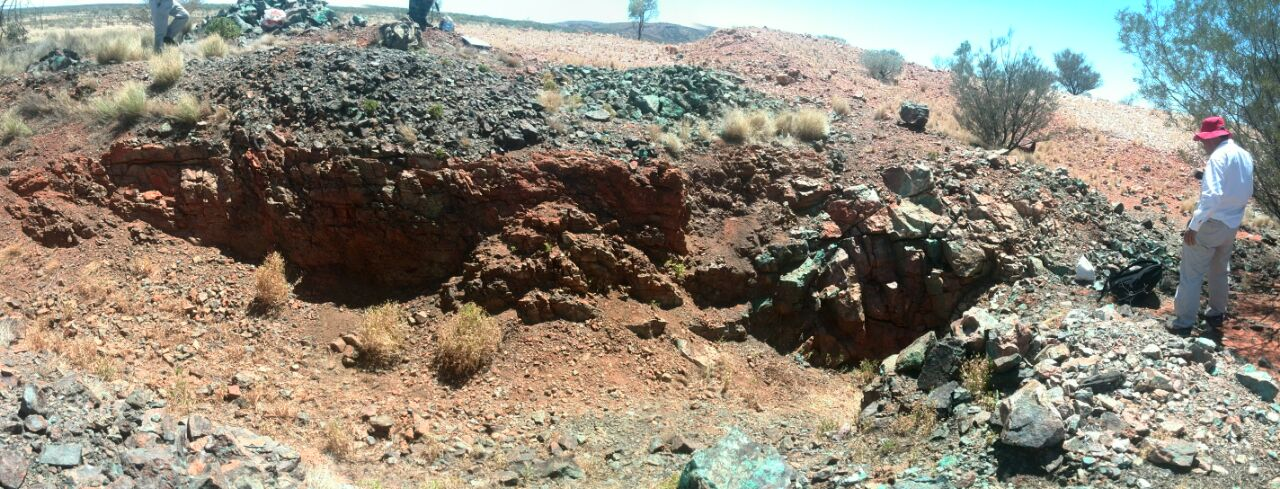
4. Driling Plan and Ore Processing Plant
4.1. Further drilling plan
We plan to do drilling exploration in the Jervois-Dulcie copper tenement to measure the copper deposits. In line with our drilling plan, 100 boreholes will be drilled at average depth of 300 meters each in 2023. Further drilling exploration may be required if the first-two rounds of drilling results justify. The planned drilling scheme is scheduled as: 60 drill holes will be completed in 2023 and further drilling 60 holes will be carried out in 2024. Further drilling of 60 boreholes may be needed in 2025.
4.2. Capital outlays for ore beneficiation and processing plant
According our scoping study, the estimated pre-production capital outlay for the open cut copper concentrates production is $20 - $30 million including studies, pre-production drilling ($6 million), concentrator and processing mills and also infrastructure refurbishment, open pit pre-strip and commissioning. This includes fixed and mobile plant capital and contingency.
There is a 12-18 month construction period for ore treatment, extraction and processing and beneficiation mills. It is expected that the initial capital investment for the establishment of ore processing plant /mill will be recovered in 12 months after the production of copper ore concentrate starts at the full scale designed, with 150,000 tons of copper concentrates (20% grade) to be produced and sold.